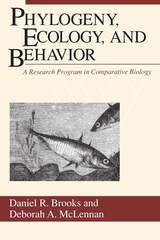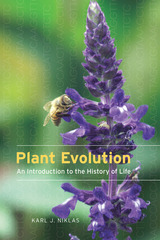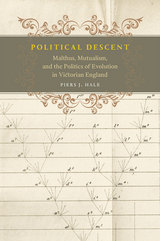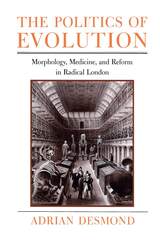5 start with P start with P

"[Phylogeny, Ecology, and Behavior] presents its arguments forcefully and cogently, with ample . . .support. Brooks and McLennan conclude as they began, with the comment that evolution is a result, not a process, and that it is the result of an interaction of a variety of processes, environmental and historical. Evolutionary explanations must consider all these components, else they are incomplete. As Darwin's explanations of descent with modification integrated genealogical and ecological information, so must workers now incorporate historical and nonhistorical, and biological and nonbiological, processes in their evolutionary perspective."—Marvalee H. Wake, Bioscience
"This book is well-written and thought-provoking, and should be read by those of us who do not routinely turn to phylogenetic analysis when investigating adaptation, evolutionary ecology and co-evolution."—Mark R. MacNair, Journal of Natural History

Tapping such wide-ranging topics as genetics, gene regulatory networks, phenotype mapping, and multicellularity, as well as paleobotany, Karl J. Niklas’s Plant Evolution offers fresh insight into these differences. Following up on his landmark book The Evolutionary Biology of Plants—in which he drew on cutting-edge computer simulations that used plants as models to illuminate key evolutionary theories—Niklas incorporates data from more than a decade of new research in the flourishing field of molecular biology, conveying not only why the study of evolution is so important, but also why the study of plants is essential to our understanding of evolutionary processes. Niklas shows us that investigating the intricacies of plant development, the diversification of early vascular land plants, and larger patterns in plant evolution is not just a botanical pursuit: it is vital to our comprehension of the history of all life on this green planet.

These two traditions, Hale shows, developed in a context of mutual hostility, debate, and refutation. Participants disagreed not only about evolutionary processes but also on broader questions regarding the kind of creature our evolution had made us and in what kind of society we ought therefore to live. Significantly, and in spite of Darwin’s acknowledgement that natural selection was “the doctrine of Malthus, applied to the whole animal and vegetable kingdoms,” both sides of the debate claimed to be the more correctly “Darwinian.” By exploring the full spectrum of scientific and political issues at stake, Political Descent offers a novel approach to the relationship between evolution and political thought in the Victorian and Edwardian eras.

"The Politics of Evolution is intellectual dynamite, and certainly one of the most important books in the history of science published during the past decade."—Jim Secord, Times Literary Supplement
"One of those rare books that not only stakes out new territory but demands a radical overhaul of conventional wisdom."—John Hedley Brooke, Times Higher Education Supplement

Representative of the international acclaim accorded Ernst Mayr’s Animal Species and Evolution, published in 1963, is Sir Julian Huxley’s description of it as “a magistral book…certainly the most important study of evolution that has appeared in many years—perhaps since the publication of On the Origin of Species.” In his extraordinary book, Mayr fully explored, synthesized, and evaluated man’s knowledge about the nature of animal species and the part they play in the process of evolution.
In this long-awaited abridged edition, Mayr’s definitive work is made available to the interested nonspecialist, the college student, and the general reader. The author has retained the dominant themes of his original study—themes now more widely accepted than they were in 1963: the species is the most important unit of evolution; individuals (and not genes) are the targets of natural selection, hence the fitness of “a” gene is a nebulous if not misleading concept; and the most important genetic phenomena in species are species-specific regulatory systems that give species internal cohesion.
Each of the twenty chapters of the original edition has been revised; six have been extensively reworked. Discussions of peripheral subjects and massive citations of the literature have been eliminated, but the glossary has been greatly expanded. The focal point of the volume is, naturally, the species—a reproductively isolated aggregate of interbreeding populations. Presenting an overview of evolutionary biology in Chapter 1, Mayr then considers the nature of species, their population structure, their biological interactions, the multiplication of species, and their role in evolution.
Because of the impossibility of experimenting with man and because an understanding of man’s biology is indispensable for safeguarding his future, emphasis throughout the book is placed on those findings from higher animals which are directly applicable to man. The last chapter, “Man as a Biological Species,” is of particular interest to the general reader. Mayr concludes that while modern man appears to be as well adapted for survival purposes as were his ancestors, there is much evidence to suggest that he is threatened by the loss of his most typically human characteristics.
READERS
Browse our collection.
PUBLISHERS
See BiblioVault's publisher services.
STUDENT SERVICES
Files for college accessibility offices.
UChicago Accessibility Resources
home | accessibility | search | about | contact us
BiblioVault ® 2001 - 2024
The University of Chicago Press









